Social Distancing — at the North Pole
Today is the anniversary of the first successful expedition to the North Pole. Admiral Robert Peary led the expedition for the National Geographic Society. He reached the North Pole on April 6, 1909, along with his American assistant Matthew Henson and four Inuit assistants: Ooqeah, Ootah, Egingway, and Seeglo.
When Robert Peary was 24 years old, he had written to his mother: “I don’t want to live and die without accomplishing anything or without being known beyond a narrow circle of friends.” He was one month shy of his fifty-fourth birthday when he reached the North Pole.
Charles and Mary Peary were from Maine. They moved to Cresson, Pennsylvania, sometime before the birth of their only child, Robert Edwin Peary, on May 6, 1856. Charles Peary died when Robert was three years old. He and his mother moved back to Maine. Robert grew up in Cape Elizabeth. Peary graduated from Bowdoin College in 1877. His degree was in civil engineering.
During his first two years after college, Peary worked as a surveyor, justice of the peace, and a taxidermist. In 1879, he moved to Washington, D.C., to work as a draftsman creating maps. He then applied for a job with the Navy Civil Engineer Corps. He passed a physical examination and a ten-day written exam. Then, he waited for two months to hear whether he had secured a position. Finally one day he saw his name in the newspaper and learned that he was one of the six men the Navy had chosen.
Peary’s first assignment was in Key West, Florida. He did everything with gusto. While overseeing a civilian contractor who was working on a iron pier, Peary personally dove into the sea to check out the seabed beneath the project.
Peary’s interest in the North Pole began when he read a paper about Greenland in 1886. He started reading all he could about Greenland. He even took a six-month leave from his work as a Navy civil engineer so he could work on a whaler going there.
After his adventure, Peary went back to his work for the Navy. His task was to search for the best route for a canal across Central America. He recommended a route through Nicaragua, but Congress chose to cross Panama instead. Before going to Central America for this task, Peary hired Matthew Henson as a manservant. Henson was working in a hat shop in Washington, D.C., at the time, but he had six years of experience as a seaman. Henson worked with Peary for three decades. He became a close friend, as well as an assistant.
In 1888 Peary married Josephine Diebitsch of Washington, D.C. They moved to New York, where he worked for the New York Navy Shipyard. Over the next few years, Peary was able to get more leave from the Navy to do research in Greenland. His wife Josephine went with him on two trips. Their first child was born in Greenland.
When the Navy transferred Peary to California, he requested more leave so that he could make an expedition to the North Pole. When the Navy refused, he appealed to President McKinley, who got Peary the leave requested. During his explorations in the Arctic in the late 1800s, Peary lost eight toes after his feet were frozen. While recovering from foot surgery in New York, he again worked for the Navy.
When President McKinley was assassinated, Theodore Roosevelt became president. He was enthusiastic about Peary’s Arctic explorations. Peary had formed an Arctic Club. The club raised $100,000 and built a ship which they named the Roosevelt.

In July 1908, the Roosevelt made it farther north than any ship had ever been on its own power. Peary had learned to use Inuit travel methods in his explorations.
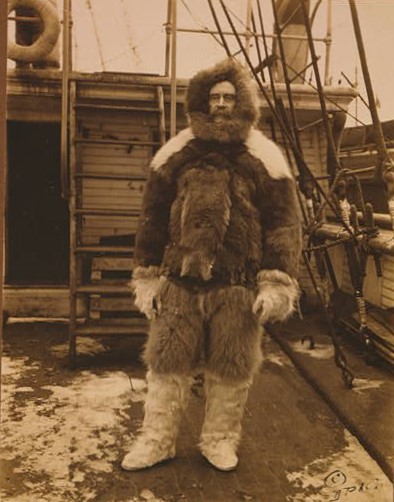
On March 1, 1909, Peary, Henson, seventeen Inuits, 133 dogs, and 19 sledges set out from Cape Columbia, the northernmost tip of Canada. At the end of March, most of the team turned back, while Peary, Henson, Ooqeah, Ootah, Egingway, Seeglo, and 40 dogs trudged on. On April 6, 1909, they raised an American flag at the North Pole.
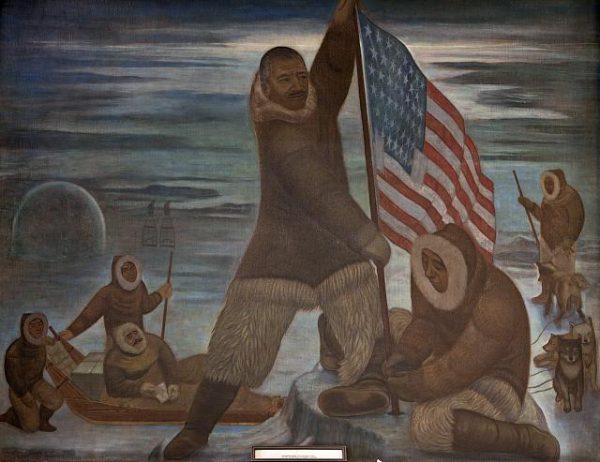
Here is a photograph of Henson.
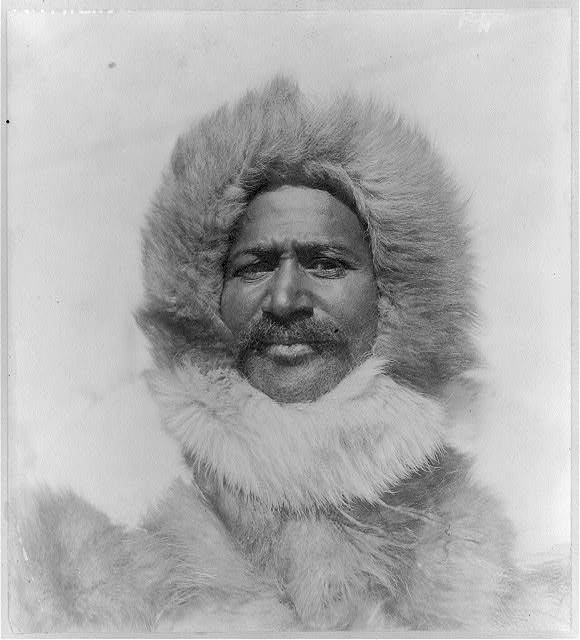
Henson is pictured on the far right in this photograph of the sled that went to the North Pole.
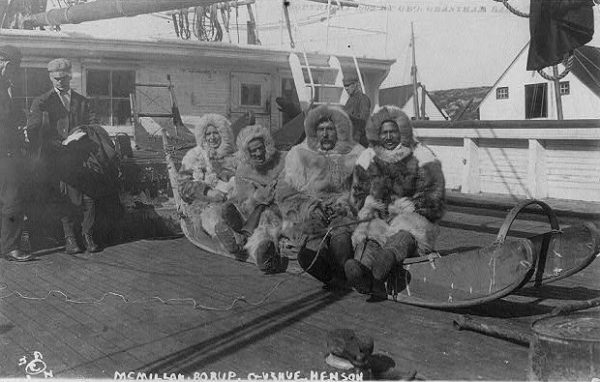
In 1910 a banquet was given in Peary’s honor at the Hotel Astor in Manhattan. Notice the photograph of the explorers hanging in front of the balcony.
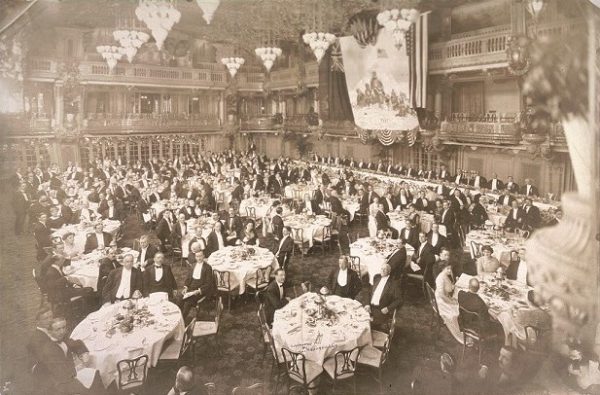
In March 1911, Congress passed legislation making Peary a rear admiral and granting him retirement status.
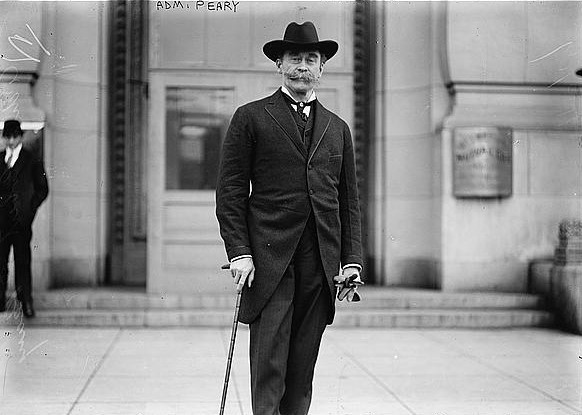
After Peary’s death, the National Geographic Society placed this globe-shaped granite monument at his grave in Arlington National Cemetery. Inscribed on the monument are these Latin words: Inveniam Viam Aut Faciam. They mean, “I shall find a way or make one.”

Peary’s widow Josephine helped with the planning of the monument.
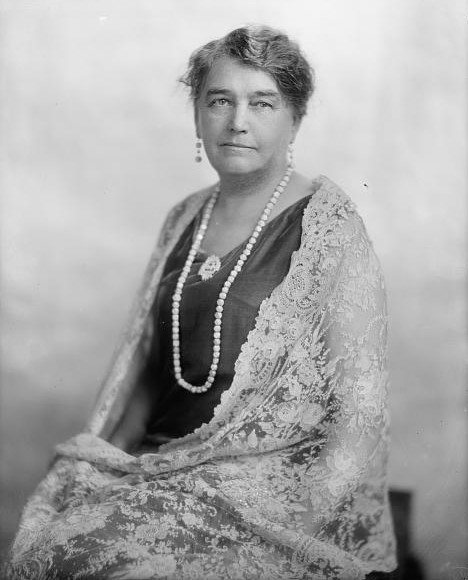
As you huddle with your family today, remember that group of two Americans and four Inuits who were socially distant from everyone else in the world on that April 6, 1909.
And keep using your imagination to “find a way or make one,” as you live these days with joy.
I can do all things
through Him who strengthens me.
Philippians 4:13
All photos are courtesy of the Library of Congress.

